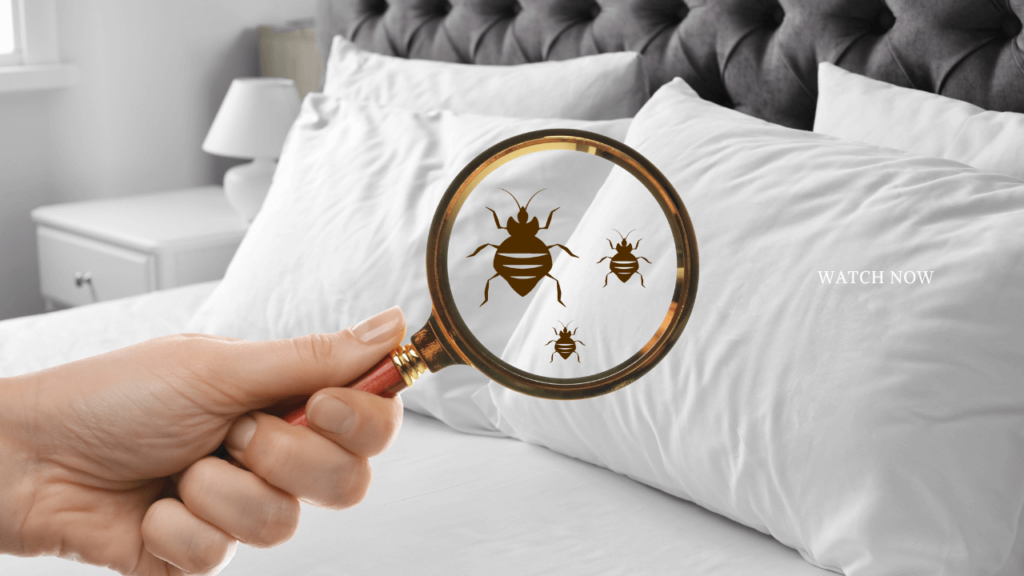Finding bed bugs in your home can be a stressful and overwhelming experience. These tiny, blood-sucking insects can cause sleepless nights and significant discomfort, but the good news is that you can get rid of them with the right strategies. In this guide, we’ll walk you through how to get rid of bed bugs in Ireland and prevent them from coming back.
What Are Bed Bugs?
Bed bugs (Cimex lectularius) are small, flat insects that feed on the blood of humans and animals. Adult bed bugs are about the size of an apple seed, with a reddish-brown color. Despite their small size, these pests can cause big problems by leaving itchy bites and spreading quickly throughout your home.
Why Are Bed Bugs Common in Ireland?
Bed bugs are found worldwide, and Ireland is no exception. With an increase in international travel and the rise of secondhand furniture sales, these pests have become more widespread in recent years. They are most commonly found in homes, hotels, hostels, public transportation, and other places with high human traffic.
What Is the Main Cause of Bed Bugs
Bed bugs can invade any home, and understanding the primary causes can help you prevent an infestation. Below is a checklist of the main factors that contribute to bed bug problems:
1. Traveling
- Description: Bed bugs are excellent hitchhikers and can easily travel with you when you stay in hotels, hostels, or other accommodations. They often hide in luggage, clothing, or personal items, and once brought into your home, they can infest the area.
- Prevention Tip: Always inspect hotel rooms for signs of bed bugs before unpacking and keep luggage off the floor.
2. Secondhand Furniture
- Description: Bed bugs are frequently introduced into homes through used furniture, mattresses, or clothing. When you bring secondhand items into your home without inspecting them first, you could unknowingly introduce bed bugs.
- Prevention Tip: Always inspect secondhand furniture thoroughly, checking for visible bugs, stains, or droppings before bringing it inside.
3. Public Transportation
- Description: Bed bugs can infest public transportation like buses, trains, or airplanes. They can hitch a ride on passengers or their belongings, making it easy for them to spread.
- Prevention Tip: Be mindful when placing bags or coats in public spaces, and inspect any items for bed bugs upon returning home.
4. Neighboring Infestations
- Description: Bed bugs can easily spread from one apartment or house to another, especially in shared walls or floors in apartment buildings or other multi-family dwellings. If a neighbor has an infestation, bed bugs may migrate to your home.
- Prevention Tip: If you suspect a neighbor has bed bugs, take proactive steps to protect your own home by sealing cracks and crevices.
5. Lack of Regular Inspections
- Description: Bed bugs can go unnoticed for a long time because they often hide in small cracks and crevices. Without regular inspections, you might not detect them until the infestation is more severe.
- Prevention Tip: Regularly check mattresses, bed frames, and furniture for signs of bed bugs, especially after travel or bringing in secondhand items.
6. Cluttered Environments
- Description: Bed bugs thrive in cluttered environments where they have plenty of places to hide. The more items you have piled around your home, the more places there are for bed bugs to live and breed.
- Prevention Tip: Keep your home clean and decluttered, particularly around the bed area, to minimize hiding spots for bed bugs.
How to Identify Bed Bugs
Before you can eliminate bed bugs, you need to know what you’re dealing with. Here are the most common signs of a bed bug infestation:
- Bites: Bed bug bites often appear as red, itchy welts in a linear or clustered pattern, usually on exposed skin.
- Blood Stains: Small blood stains on your sheets or pillowcases from crushed bugs.
- Fecal Marks: Dark brown or black spots on your bedding, mattress, or furniture—these are from bed bug droppings.
- Shed Skins: Bed bugs molt five times before reaching adulthood, leaving behind transparent skins.
- Odor: A musty, sweetish odor in heavily infested areas, often described as “a scent of rotten raspberries.”
Step-by-Step Guide to Getting Rid of Bed Bugs
Step 1: Do a Thorough Inspection
The first step in eliminating bed bugs is a meticulous inspection of your home. Here’s where you should focus your attention:
- Check your mattress and box spring: Look along seams, edges, and any cracks or crevices where bugs may hide.
- Examine furniture: Look for signs of bed bugs in upholstered furniture, including sofas and chairs.
- Inspect cracks and crevices: Check baseboards, behind picture frames, and under carpets. Bed bugs are excellent at hiding in tiny spaces.
- Look in electronics: Bed bugs can hide in electronics such as alarm clocks, televisions, and electrical outlets.
Step 2: Declutter and Clean Your Home
The more cluttered your space, the more places bed bugs have to hide. Take these steps to declutter and thoroughly clean your home:
- Declutter the area: Remove unnecessary items from your bedroom and surrounding areas. The fewer hiding spots, the easier it is to spot bed bugs.
- Vacuum thoroughly: Use a vacuum with a strong nozzle to clean all areas where bed bugs might be hiding, including under furniture, along baseboards, and inside crevices. Dispose of the vacuum bag immediately after cleaning.
- Wash all textiles: Wash bedding, clothes, curtains, and any other fabric items in hot water (at least 60°C) and dry them on the highest heat setting for at least 30 minutes.
Step 3: Apply Heat Treatment
Bed bugs are sensitive to heat, and using heat can be an effective way to kill them.
- Steam cleaning: Use a steam cleaner to treat your mattress, bed frame, furniture, and cracks where bed bugs may be hiding. Bed bugs die at temperatures above 50°C, so steam treatment is an effective option.
- High-temperature drying: Place all washable fabrics (bedding, clothing, etc.) in the dryer on high heat for at least 30 minutes. This kills bed bugs and their eggs.
- Professional heat treatment: Some pest control companies offer whole-home heat treatments, where they use specialized equipment to raise the temperature of your home to kill all stages of bed bugs.
Step 4: Cold Treatment
While heat is a primary method for eliminating bed bugs, cold treatment can also be effective, particularly for items you can’t wash or steam clean.
- Freezing infested items: Place any non-washable items like stuffed animals or small furniture in a plastic bag and freeze them for at least four days at temperatures below -18°C.
- Professional cold treatment: For larger infestations, pest control companies may offer cold treatment methods that use extreme freezing techniques.
Step 5: Use Bed Bug Pesticides
If heat and cold treatments are insufficient, insecticides can provide an additional layer of protection.
- Bed bug sprays: There are various sprays specifically designed for killing bed bugs. Be sure to follow the instructions carefully and avoid spraying in areas where children or pets may be exposed.
- Residual insecticides: These are longer-lasting pesticides that can be applied to cracks, crevices, and baseboards. They kill bed bugs that come into contact with treated surfaces.
- Integrated pest management (IPM): Some pest control companies use IPM, which combines multiple methods—such as pesticides, heat treatments, and vacuuming—for more effective bed bug control.
Step 6: Seek Professional Help if Necessary
While DIY methods can work, sometimes bed bug infestations are too severe for a homeowner to handle alone. In such cases, it’s essential to call in a professional pest control service. A licensed exterminator has access to more powerful treatments and equipment.
- How to choose a pest control company:
- Ensure the company is licensed and experienced in handling bed bug infestations.
- Look for companies that use eco-friendly and non-toxic treatment options if you have concerns about chemicals.
- Ask for a written guarantee for treatments, especially for larger infestations.
Preventing Future Bed Bug Infestations
Once you’ve eradicated the bed bugs, it’s important to take steps to prevent a reinfestation. Here’s what you can do:
- Seal cracks and crevices: Caulk and seal any cracks in your walls, floors, or around window and door frames to block potential entry points.
- Use protective covers: Invest in bed bug-proof mattress and box spring encasements. These covers trap any existing bugs and prevent new ones from entering.
- Be cautious when traveling: Bed bugs are notorious for hitching rides on luggage. Always inspect hotel rooms for signs of bed bugs before unpacking, and keep your suitcase off the floor.
- Inspect secondhand furniture: Before bringing used furniture or clothing into your home, carefully inspect it for signs of bed bugs.
- Check your home regularly: Perform periodic checks in your bedroom and other high-risk areas to catch any potential bed bugs early.
The Cost of Bed Bug Removal in Ireland
The cost of dealing with a bed bug infestation in Ireland can vary significantly based on factors like the severity of the infestation and the treatment method. Here’s an estimated breakdown of costs:
| Treatment Type | Estimated Cost |
|---|---|
| DIY treatment (sprays, vacuum, etc.) | €100 – €300 |
| Professional heat treatment | €500 – €1,500 |
| Chemical treatment by pest control | €200 – €1,000 |
| Full home fumigation | €1,000 – €3,000 |
While professional treatments may seem expensive, remember that they can save you money in the long run by effectively eradicating the problem and preventing further infestations.
FAQ
1. How can I tell if I have a bed bug infestation?
Signs of a bed bug infestation include itchy, red bites in a linear pattern, small blood stains on your sheets, dark fecal spots, shed skins, and a musty odor in your home. It’s important to inspect your mattress, furniture, and cracks in walls thoroughly for signs of these pests.
2. Can bed bugs spread to other parts of the house?
Yes, bed bugs can spread from one room to another through cracks in the walls, furniture, or when items are moved between rooms. They can also travel on clothing, luggage, or secondhand furniture. It’s crucial to treat the entire home, especially if you notice bed bugs in one room.
3. Are DIY treatments effective in getting rid of bed bugs?
DIY treatments, like vacuuming, steaming, and washing fabrics in hot water, can help control bed bugs but may not fully eradicate a severe infestation. For more effective and long-term results, especially for larger infestations, professional pest control services are recommended.
4. How long does it take to get rid of bed bugs completely?
The time it takes to eliminate bed bugs can vary based on the severity of the infestation and the treatment methods used. With professional help, it usually takes about 2-3 weeks to fully resolve the issue, though you may need to monitor for a few additional weeks to ensure they don’t return.
5. How can I prevent bed bugs from coming back?
To prevent bed bugs from returning, regularly inspect your home for signs of infestations, seal cracks and crevices where they can enter, and use protective mattress covers. When traveling, inspect hotel rooms and keep your luggage off the floor. Avoid bringing secondhand furniture or clothing into your home without thoroughly checking for bed bugs.
Conclusion
Dealing with a bed bug infestation in Ireland can feel like a daunting task, but with the right knowledge and tools, you can eliminate these pests from your home. Start by identifying the signs, thoroughly inspecting your home, and using heat or cold treatments. If the problem persists, don’t hesitate to reach out to a professional pest control company.
With consistent monitoring and preventive measures, you can avoid future infestations and rest easy in a bed bug-free home.
By following the steps in this guide, you’ll be equipped to tackle a bed bug problem head-on. Whether you handle it yourself or call in a professional, the most important thing is to act quickly and thoroughly. Keep your home clean, monitor regularly, and take proactive steps to ensure that bed bugs stay out for good.

Hi, I’m Tanvir, the founder and author of Explore Ireland Now. With a deep love for Ireland and its rich culture, history, and landscapes, I created this site to share everything that makes this beautiful country worth exploring. Whether you’re a local looking for hidden gems or a traveler planning your next adventure, I provide insightful guides, tips, and recommendations to help you experience Ireland to the fullest.
From stunning landscapes to vibrant cities and quaint villages, Ireland is full of wonders waiting to be discovered. Through my personal experiences and research, I aim to bring you the most up-to-date information and inspiration for your journey.
Thank you for visiting Explore Ireland Now—I hope my content helps you uncover all that this incredible country has to offer! If you have any questions or need travel advice, feel free to reach out.



